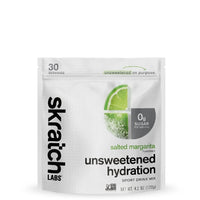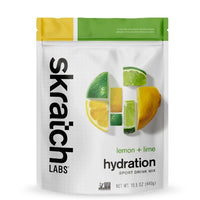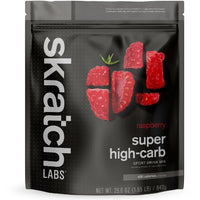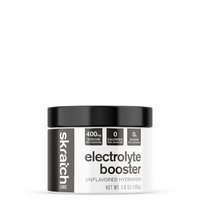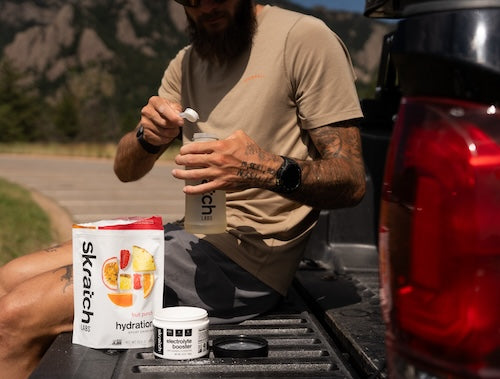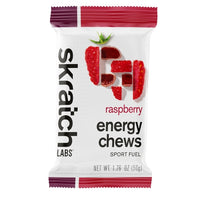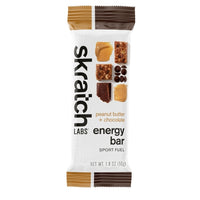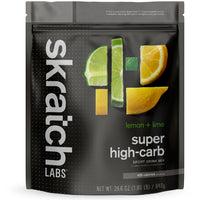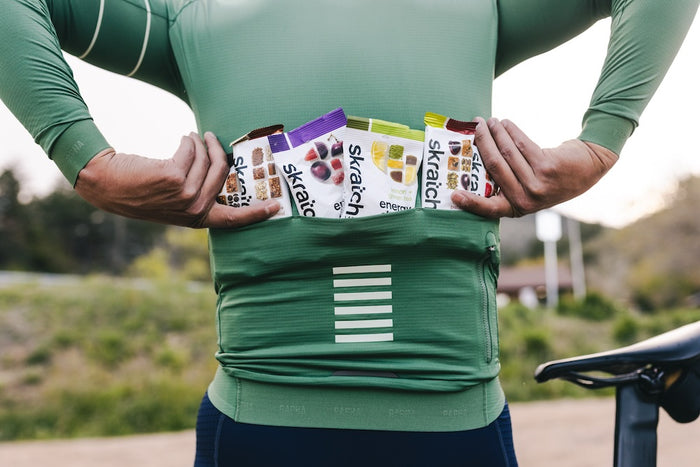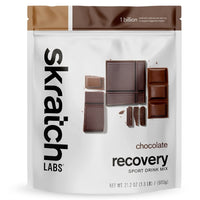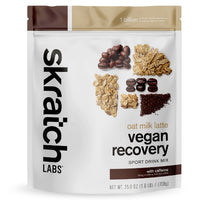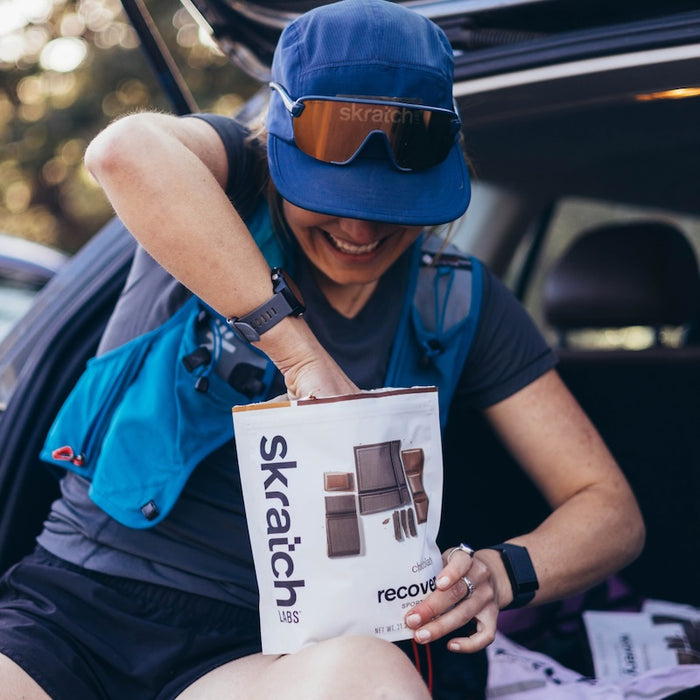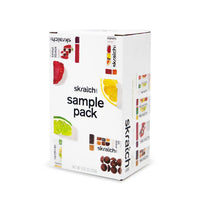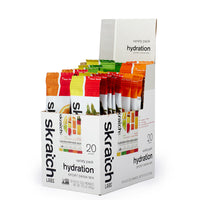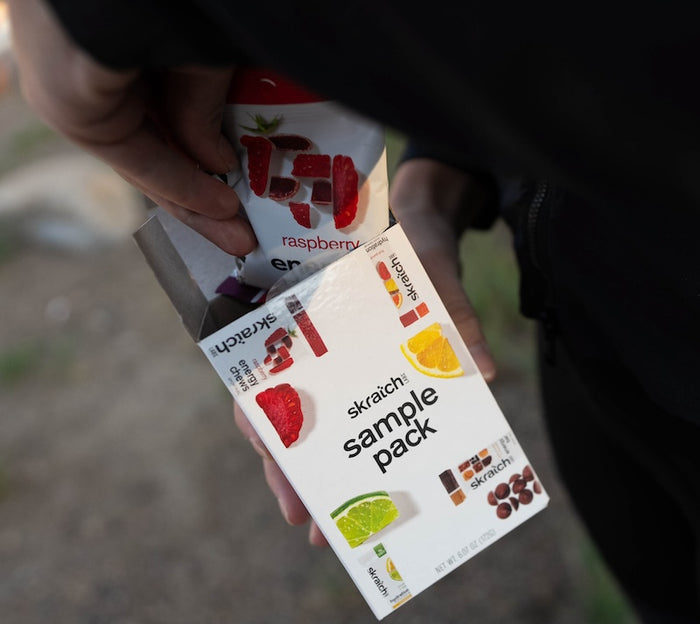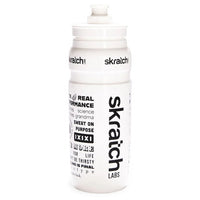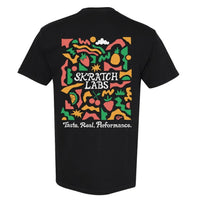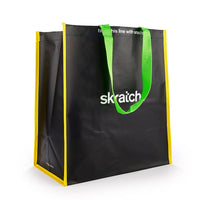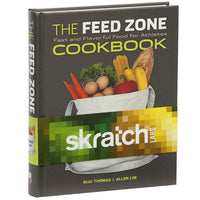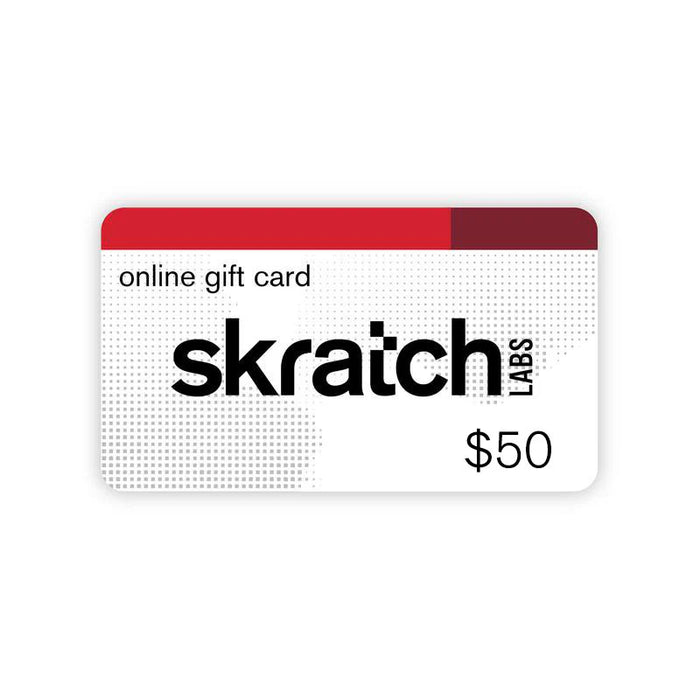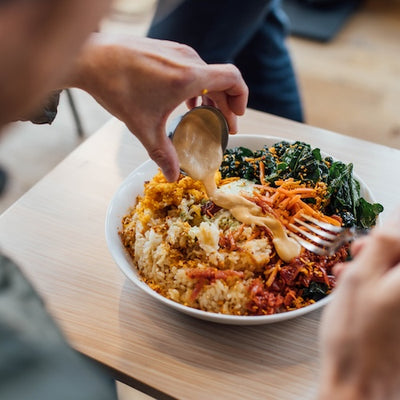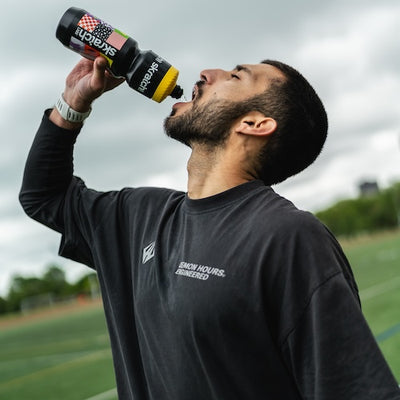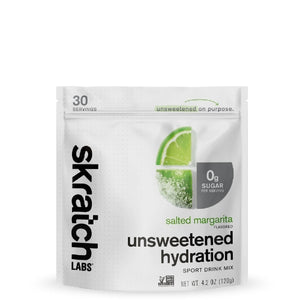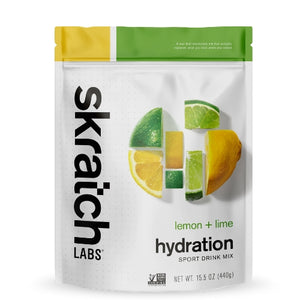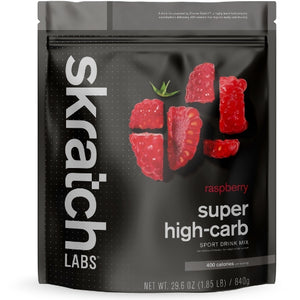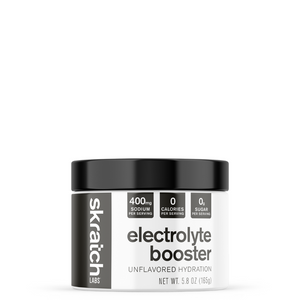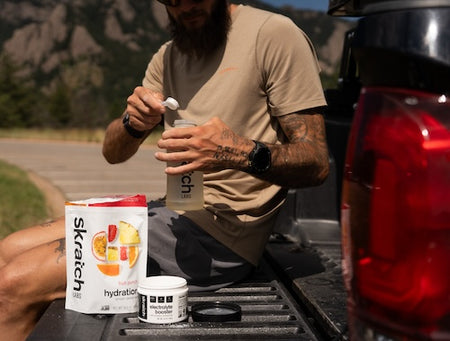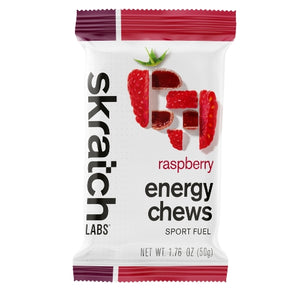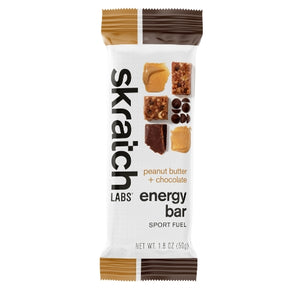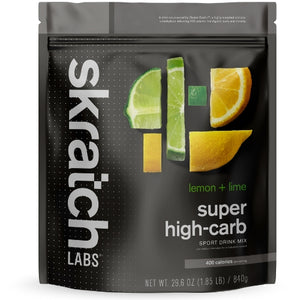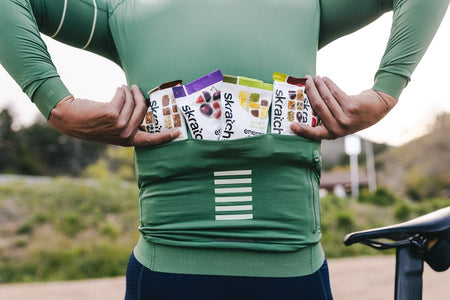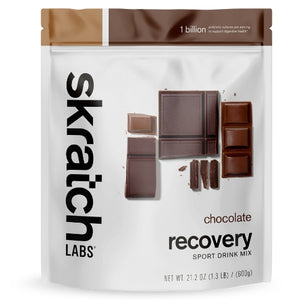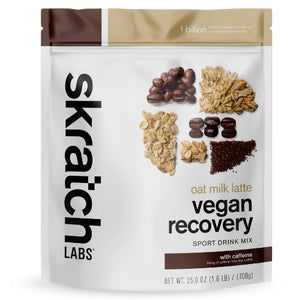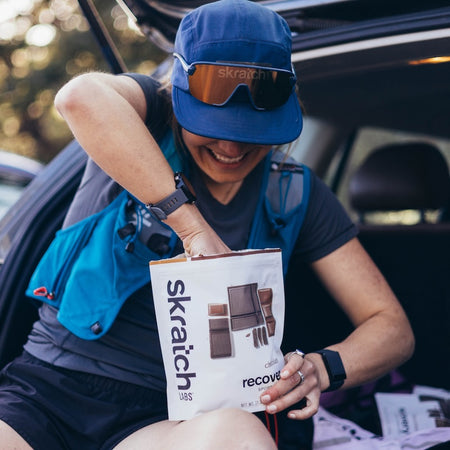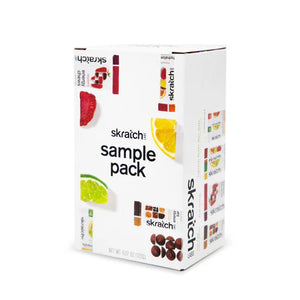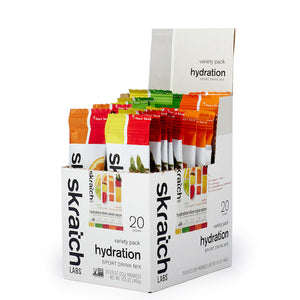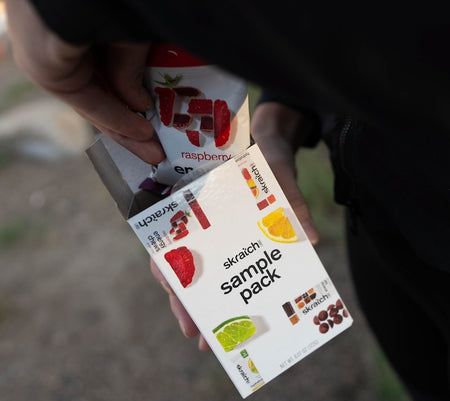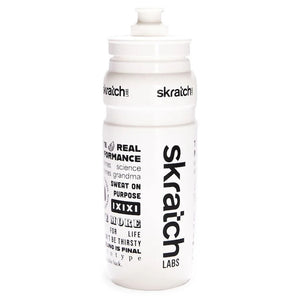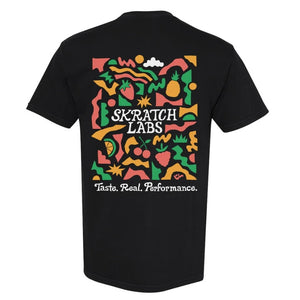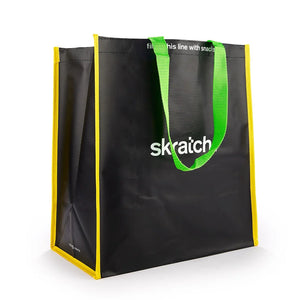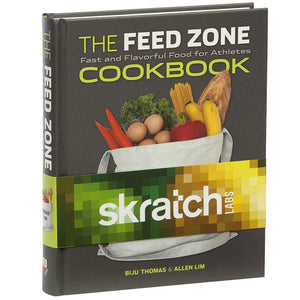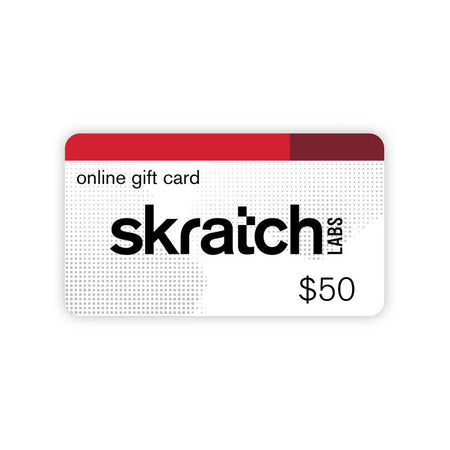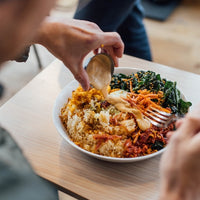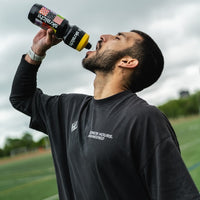By Bruce Lin
Original article from our friends at The Pro’s Closet.
I’ve never had a great understanding of nutrition and have always struggled with eating and drinking properly to fuel my rides. I will either eat and drink too early or too late, or ingest too little or too much. I often don't have food ready and end up scavenging last-minute protein bars or drinking pre-workout shakes.
Of course, being all over the map like this has led to mixed and inconsistent results. There are several big races on my calendar next year, so this off-season I’m hoping to dial in my pre-ride nutrition strategy so I can perform my best.
To develop a better routine for eating and drinking before rides, I decided to seek help from the experts at Skratch Labs. Skratch's founder, Dr. Allen Lim spent years as a sport scientist and a coach for professional cyclists. He has five easy tips and strategies for eating and drinking. These provide simple guidance for busy amateur riders like myself looking to better plan their pre-ride nutrition so they can ride faster.

1. Skip meal replacements in favor of real food
It’s hard to turn down the convenience of prepackaged foods like bars and shakes when your schedule is packed. But I’m not always sure it’s helping my performance. Sometimes I pay the price in the bathroom later. Dr. Lim actually started out making his own training food and sports drinks from scratch because the artificial ingredients in pre-packaged sports bars and drinks were making his riders feel sick. He’s a huge advocate for eating “real” food to support your riding.
Allen Lim: "While pre-packaged foods like bars, gels, and chews are convenient and tout performance, it’s important to realize that real food can work just as well if not better than engineered nutrition and is likely going to be easier to digest. As a general rule, sports nutrition should come from your kitchen, not just from a package. Take the time to prepare delicious, high-carb meals and snacks that you will look forward to eating."
"Making fresh, non-packaged food for before or during your ride doesn’t always have to be complicated. It could come in the form of a regular sandwich, a boiled potato with salt & parmesan, a banana, or a ball of sushi rice mixed with chocolate or some scrambled eggs. These sorts of things can all give you the calories you need without upsetting your stomach the way a lot of sugary gels or sports bars can. You can find recipes for great riding food in 'The Feed Zone Cookbook' or 'The Feed Zone Portables,' that I wrote with Chef Biju Thomas."
 Photo: Greg Erwin
Photo: Greg Erwin
2. Eat and drink three hours before your ride
My busy home and work life have wreaked havoc on my nutrition schedule. I’ve gone into training rides after eating and drinking nothing all day. When I try to compensate by downing a meal an hour before I leave, I always end up feeling bogged down.
AL: “For longer workouts lasting more than two to three hours, it’s really important that you eat a substantial meal that makes you full and satiated at least three hours before the start of the workout and to drink enough water to quench any sense of thirst. Doing so will ensure that your food is completely digested and absorbed, that you’ve got plenty of time to drop the proverbial 'kids' off at the 'pool,' that you’re adequately hydrated, and that your blood sugar will be steady.
“This last point is really important. Eating a meal causes your blood sugar to rise. This, in turn, causes the hormone insulin to be released about 60 to 90 minutes later, which causes sugar to be moved into muscle and fat cells. If you start exercising 60 to 90 minutes after you eat a large meal, you’ll be starting that exercise right as insulin is peaking. Since a contracting muscle can move sugar into the muscle without insulin, the combination of insulin and exercise can cause blood sugar to dip making you feel like total crud. So give yourself ample time to digest, hydrate, visit the throne, and steady your blood sugar before your big workouts or events.”
 Photo: Corbett Hall
Photo: Corbett Hall
3. It's also OK to eat and drink right when you start riding
The three-hour rule is easy to understand but not always possible to follow. When I do have the time, eating a large breakfast and waiting around three hours before a lunch ride works really well. Sometimes though, family and work have a way of popping up and messing with my meal timing no matter how carefully I lay out my plans.
AL: “Sometimes it’s not possible to eat an ample meal three hours before your workout. If that’s the case and you’re worried about not having enough energy for a hard workout, start eating and drinking right when you start the workout. What’s unique about exercise is that unless you’re at a very low exercise intensity, insulin is not normally released when we are exercising since working muscles can uptake sugar without the need for insulin. This means that if you start eating right when you start exercising you won’t experience the crash that is common if you eat too much an hour or so before a workout. You’ll often see athletes right at the start line shoving simple sugars down just before the gun goes off to give them a little boost.”
 Photo: Greg Erwin
Photo: Greg Erwin
4. Riding fasted can occasionally be a good strategy too
Sometimes, the early morning is the only free time I have to get in a quick ride or workout. I often only have an hour or two after getting up before I have to get ready for my day. I do not have three hours to digest, plus I usually have no appetite that early.
AL: “In some cases, if the workout isn’t too hard or long, you can just get up and go, especially in the morning when you’ve just gotten up. The unique thing about sleep is that it’s essentially an overnight fast that re-adjusts the body’s hormonal and metabolic environment, keeping blood sugar steady despite a lack of food. You can take advantage of this in the morning by simply getting up and starting your workout, then having breakfast afterward. This works especially well for lower-intensity aerobic workouts where your primary fuel source is fat. So if it’s early, the intensity or duration isn’t that great, and you’ve gotten plenty of sleep, just get up and go.”

5. Drink to thirst and don’t just drink plain water
Hydration is paramount for athletes, and no one understands this better than the experts at Skratch (read our "Hydration Tips for Cyclists" post). Staying properly hydrated throughout the day can be difficult, especially when you’re busy. I usually have trouble drinking plain water because it gets boring and I end up trying to chug water before rides.
AL: “Beyond food, another common technique for many athletes is to drink a high to very high sodium solution like Skratch Labs' Wellness Hydration Mix (This product has been discontinued. If you wish to recreate, add 1 serving of Unsweetened Hydration Sport Drink Mix to 1 serving of our Sport Drink Mix) or Hyper-Hydration Mix (This product has been discontinued. If you wish to recreate, combine 3 servings of Unsweetened Hydration Sport Drink Mix to 1 serving of Sport Drink Mix to 500 ml of water) right before very hard and long workouts, especially in moderate to high heat, when getting adequate hydration might be a problem."
"By drinking a high-sodium solution, right before exercising in the heat, the drop in blood pressure and extra space created by expanding blood vessels that are dilating to bring hot blood to the skin to keep you cool can be offset. But, be careful. Drinking too much at the onset of exercise if it’s cool or when the exercise intensity is low will likely just make you need to pee 20-30 minutes into your workout.
“When we sweat we lose water and electrolytes — 90% of which is salt or sodium chloride. Between sodium and chloride, it’s sodium that is most important for us to replace. Sodium sweat concentration is individual and can range from 500 to 1,500 mg of sodium per liter of sweat. Of note, sweat is significantly less salty than blood, which has a concentration of about 3500 mg of sodium per liter. So, as we sweat the concentration of sodium in the blood rises.
“It’s this increase in blood sodium concentration that triggers thirst. To quench that thirst and restore sodium balance, less water is needed than was lost, since there’s not as much salt in the blood. Thus, drinking plain water to thirst can cause dehydration over a long period of time.
“The issue, however, isn’t with thirst — which is an important safety mechanism that keeps us from diluting our blood’s sodium balance. The issue is with plain water. To optimize both water balance and sodium balance, all you need to do is drink something that has a similar sodium concentration as your sweat. But, if all you have is water, just make sure not to force yourself to drink beyond thirst. Drinking to thirst with a drink that has a similar sodium concentration as sweat will keep you in both sodium and water balance.”
